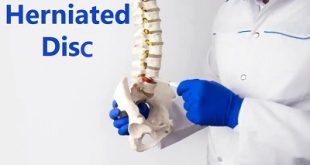Definition
Hoarding disorder is an illness that makes people feel a very strong need to collect things. They can’t bear to think about parting with their things. Over time, the collected items may take over the person’s house. The items may cover tables, beds, counters, and floors. Hallways and rooms including kitchens and bathrooms may get so cluttered that they can no longer be used or kept clean.
The collected items are often ordinary things like newspapers, plastic containers, or clothing. But different people collect all kinds of different things. And some people collect cats, dogs, or other animals. People with this illness may feel very ashamed or guilty about their behaviour. And yet the idea of getting rid of anything is very upsetting to them. It can be frustrating to be a family member or friend of someone who has this illness. But it’s important to remember that it is an illness.
Hoarding disorder is different from being a collector, even one who collects a lot of items. Collectors are proud of their collections. They are able to organize and display them. Their collections don’t get in the way of everyday life.
Epidemiology
Hoarding disorder is thought to be present in 1.5% of the population with this figure increasing in older adults. Community surveys estimate the point prevalence of clinically significant hoarding in the United States and Europe to be approximately 2%-6%.
The disorder affects both males and females, but some studies have reported a significantly greater prevalence among males.
Types of hoarding disorder
There are a few different types of hoarding that people may experience. Some people may exhibit a specific type of hoarding, while others may experience a more general form.
Animal hoarding: Involves acquiring many animals as pets, often many more than the person can care for
Compulsive shopping: Involves a preoccupation with shopping and buying unneeded items
Object hoarding: Involves hoarding specific items such as paper, books, clothing, or even garbage
Risk factors
In some cases, hoarding is associated with self-neglect. People are more likely to have hoarding disorder if they:
- Live alone
- Are unmarried
- Have had a deprived childhood, with either a lack of material objects or a poor relationship with other members of their family
- Have a family history of hoarding
- Grew up in a cluttered home and never learned to prioritize and sort items
Causes of hoarding disorder
No one knows exactly what causes hoarding.
It can be triggered by:
- Difficult experiences and painful feelings
- Perfectionism and worrying about making mistakes
- Childhood experiences of losing or not having possessions, or not being cared for
- Trauma and loss
- Family history or habits
- Other mental health problems.
If you hoard, you probably started doing so for good reasons. For example, you may have wanted to avoid wasting things, keep track of important information or be reminded of a significant memory or time.
If you hoard, you might:
- Have very strong positive feelings whenever you get more items
- Feel very upset or anxious at the thought of throwing or giving things away
- Find it very hard to decide what to keep or get rid of.
Hoarding disorder symptoms
Someone who hoards may exhibit the following:
- Inability to throw away possessions
- Severe anxiety when attempting to discard items
- Great difficulty categorizing or organizing possessions
- Indecision about what to keep or where to put things
- Distress, such as feeling overwhelmed or embarrassed by possessions
- Suspicion of other people touching items
- Obsessive thoughts and actions: fear of running out of an item or of needing it in the future; checking the trash for accidentally discarded objects
- Functional impairments, including loss of living space, social isolation, family or marital discord, financial difficulties, health hazards
Complications
Hoarding disorder can cause a variety of complications, including:
- Increased risk of falls
- Injury or being trapped by shifting or falling items
- Family conflicts
- Loneliness and social isolation
- Unsanitary conditions that pose a risk to health
- A fire hazard
- Poor work performance
- Legal issues, such as eviction
Other mental health disorders
Many people with hoarding disorder also experience other mental health disorders, such as:
- Depression
- Anxiety disorders
- Obsessive-compulsive disorder (OCD)
- Attention-deficit/hyperactivity disorder (ADHD)
Diagnosis and test
To diagnose hoarding disorder, a doctor will ask about your collecting and saving habits. To confirm a diagnosis, the following symptoms must be present:
- Ongoing difficulty getting rid of possessions whether they have value or not
- Feelings of distress associated with discarding items
- Living spaces so filled with possessions they are unusable
Treatment and medications
If it is a symptom of another illness, the first thing to do is to start treatment for that illness.
If there is no other illness, there are two main types of treatment for hoarding disorder: psychological therapy and medication. Some people need both, others get better with just psychological therapy.
Psychological therapy
Cognitive behavioral therapy (CBT) is the most effective psychological treatment. It can help you to change the thoughts and feelings that drive you to hoard.
There are several stages:
- Getting to trust your therapist. Things can be difficult to talk about, so it can take a little time to open up to someone new.
- The therapist then helps you to understand what makes it difficult for you to throw things away.
- You then agree to not hoard more items during the treatment. There is no point clearing things away if you replace them with others.
- You and your therapist start clearing out items together. You will find that the longer you spend thinking about it, the more difficult it becomes.
- The therapist helps you to look at your thoughts and feelings about possessions.
As hoarding has often been going on for years, treatment can take a long time. The aim is to use the 3 Rs – Reduce, Recycle and Reuse.
Medication
Selective serotonin reuptake inhibitors (SSRIs) are antidepressant medications which are used to help anxiety and obsessional problems. They also seem to help people who hoard. Improvement usually happens slowly over weeks or even months.
Research continues into other medications which might be helpful in hoarding disorder.
One group of drugs blocks the action of dopamine, a chemical in the brain. They can be used with SSRI medication if the SSRI alone does not seem to be helping enough.
Prevention of hoarding disorder
Because little is understood about what causes hoarding disorder, there’s no known way to prevent it. However, as with many mental health conditions, getting treatment at the first sign of a problem may help prevent hoarding from getting worse.
 Diseases Treatments Dictionary This is complete solution to read all diseases treatments Which covers Prevention, Causes, Symptoms, Medical Terms, Drugs, Prescription, Natural Remedies with cures and Treatments. Most of the common diseases were listed in names, split with categories.
Diseases Treatments Dictionary This is complete solution to read all diseases treatments Which covers Prevention, Causes, Symptoms, Medical Terms, Drugs, Prescription, Natural Remedies with cures and Treatments. Most of the common diseases were listed in names, split with categories.








I believe Iam a hoarder of some of my possessions but will not take anything to so the dopamine from my system as I already don’t have enough currently and must take my medicine to improve my situation. Is there anything else I can take to improve my situation. Thank you Sharlett